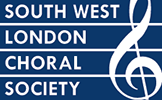July concert: About the music
From Martin: some more about the music for our next concert on Saturday July 15th…
This term we are singing two settings of the Gloria by Vivaldi and a French (well, nearly French...) Grand Motet, Laudate Dominum de Coelis, by Michel Corrette.
Vivaldi's Gloria is almost as well known as the famous Four Seasons concertos - it is certainly his best known choral work. Much less well known is the fact that Vivaldi actually composed two settings of the Gloria, probably between 1713 and 1715, when he was working as Maestro di Violino at the Ospedale della Pietà, one of the four orphanages for abandoned or illegitimate children in Venice. Vivaldi was then in his mid-30s, famous as the 'Red Priest' because of the colour of his hair, and at the height of his powers as both a composer and a virtuoso violinist, yet afflicted by a severe form of asthma which prevented him from making public appearances either as a priest or as a musician. Nevertheless, between 1715 and 1723 he travelled widely, visiting Mantua, Rome, Amsterdam and Prague and receiving honours from the Grand duke of Tuscany and the Emperor Charles VI among many others. His music began to be published, first by the influential Estienne Roger of Amsterdam, and quickly became familiar to a wide audience throughout Europe. Vivaldi returned to Venice and to work at the Pietà in 1723, remaining there until 1740. Then, finding that his music was no longer fashionable at home, he left for Vienna, hoping to find employment at the court of Charles VI. Sadly the Emperor died only a few months later. Vivaldi soon fell ill again, and died in Vienna in poverty and obscurity.
Some of Vivaldi's music remained popular after his death, most notably the Four Seasons. In 1765 the Parisian composer Michel Corrette (1707 - 1795) wrote a setting of Psalm 148 which turns out to be largely an arrangement for choir and orchestra of the Spring concerto from the Four Seasons. Vivaldi's music is instantly recognisable even in its choral guise, although Corrette sometimes abbreviates it or extends it to suit his purpose. It is a bubbly, joyful piece that is seldom performed (I have spent quite a lot of hours over the last few months transcribing it afresh from an 18th-century score!), but which makes an excellent companion piece sung between Vivaldi's two Gloria settings.

